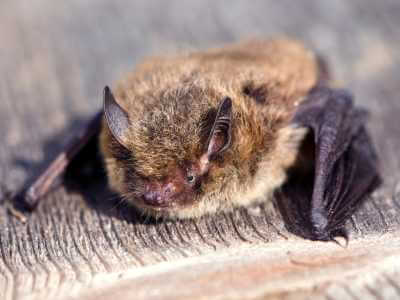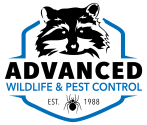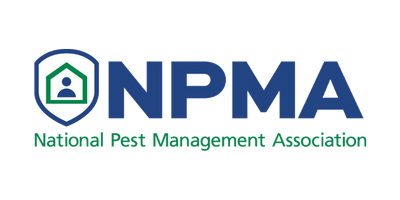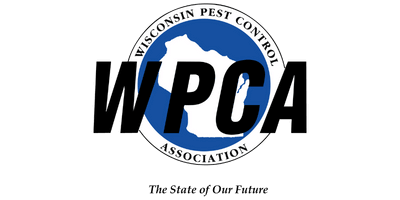
What Do Bats Look Like?
Bats are nocturnal flying mammals that live in dark, secluded areas and feed on insects. They use echolocation to navigate while flying and to help them catch their prey. Bats have large ears designed for echolocation to compensate for their poor eyesight. Their head and body are covered with red, brown, or grey fur, and their two wings are made of a hairless double membrane stretched across their elongated fingers and arm bones. Bats are the only mammals that are capable of true flight. There are eight species of bats in Wisconsin.
What are the Signs of Bats in Your Attic?
Bats are beneficial animals to have around your property but can pose a problem when they roost in your house. Bat infestations can damage your home and put the health of your family at risk. Attics, chimneys, and eaves are popular places for bats to roost and hibernate. A bat only needs a quarter-inch opening to gain access inside.
- Seeing a Bat –Having bats on your property does not necessarily mean that you could have bats inside. However, if you know you have bats outdoors, it can alert you to their possible presence indoors when you start seeing other signs.
- Bat Droppings –Bat guano resembles mouse droppings with a shiny, speckled appearance. You may notice piles near where bats enter and exit the building. Their droppings are typically found in attics on top of the flooring or insulation. Bat droppings can also be found on window sills, siding, dormers, and corners of roofing.
- Bat Noises –Bats produce high-pitched “clicking,” squeaks, or chipping sounds. Homeowners may hear scratching, chirping, and flapping sounds at night or early in the morning when bats enter or exit your house.
- Unpleasant Smells –Bat guano and urine produce a musty odor that smells like ammonia. The larger the bat infestation, the more profound the odor.
OUR SERVICE
Bat Removal & Exclusion in Milwaukee, WI
Advanced Wildlife and Pest Control provides humane bat removal and exclusion services in Milwaukee and southeastern Wisconsin. Our certified bat specialists humanely and efficiently remove and exclude nuisance bats from your home or business.
STEP 1 - BAT INSPECTION
Comprehensive Home Inspection
A licensed wildlife specialist will thoroughly inspect your home’s exterior and interior to identify any signs of bat activity. We will inspect the attic, roofing, vents, and chimney for droppings, rub marks, strong ammonia odors, and potential entry points. Bats can fit through a gap as small as 1/4 of an inch. Our professionals will then devise a customized plan to safely and legally perform a bat exclusion.
STEP 2 - BAT EXCLUSION
Prevent Future Bat Infestations
The most effective and humane way to remove bats from your home is to use a bat valve along with a full home exclusion. A bat valve allows bats to exit your home but prevents them from getting back in. We will seal off all other entry points so the bats can only leave through the valve. The removal process usually takes 3-7 days. Our wildlife removal professionals will perform a final inspection before removing the valve. Once the valve is removed, we will seal the final entry point.
STEP 3 - CLEAN UP
Bat Guano Removal
Once your home is secure, it’s important to clean and restore it properly. A bat colony will contaminate attic insulation with guano, urine, parasites, and other harmful substances. These materials pose a serious health risk to you and your family and should be removed as soon as possible. We offer wildlife cleaning, sanitation, and attic restoration services to eliminate animal waste and disinfect the affected areas. Our technicians will safely remove damaged insulation and feces, disinfect the space, and reinsulate your attic.
When is the Best Time to Remove Bats?
The best time to remove bats from your home is in the fall. Bat maternity colonies begin to form in early April. Bat exclusions are prohibited from June 1 to August 15 to protect Wisconsin’s little brown and big brown bats during maternity seasons. Exclusions occurring during this period will separate mothers from their flightless pups, leaving the pups to die of starvation and potentially exacerbating the homeowners’ bat problem. Bat exclusions can be performed from late August through early November when the young are strong enough to fly. Alternatively, bat exclusion can occur in late April through early May after the bats first wake from hibernation and before their young are born.
Have a Bat Problem?
Keep critters out with our safe, professional, and humane bat removal and exclusion services.
Are Bats a Protected Species?
Yes, bats are protected in Wisconsin, and killing them is illegal. Wisconsin’s bat population has been declining rapidly since 2014 due to white-nose syndrome, a fungal disease that has killed millions of hibernating bats. Advanced Wildlife and Pest Control follows all local, state, and federal regulations to ensure bats are protected throughout the removal process. Little brown and big brown bats are commonly found roosting in attics, chimneys, walls, and crawlspaces. In order to get the bats out, we provide humane bat eviction and exclusion services to allow bats to naturally exit your home but prevent reentry. All exclusion techniques cause no physical harm.
Do Bats Carry Rabies?
Yes, bats can carry rabies. Bats are the most commonly reported animal to have rabies in Wisconsin, but only about 6% of bats tested positive for rabies in the U.S. Bats primarily transmit rabies through bites. Bat bites can be hard to notice because bats have small teeth. Children, people with mental impairments, or people who are asleep may be especially vulnerable to unrecognized bites. If you come into contact with a bat or suspect you’ve been bitten, you should seek medical attention immediately. You can also capture the bat for rabies testing at the Wisconsin State Laboratory of Hygiene.
BAT FAQS
Frequently Asked Questions
What do bats eat?
Most North American bats are insectivores and eat a variety of insects, including mosquitoes, moths, and beetles. A single bat can eat up to 3,000 insects in a night. Bats begin foraging for insects at dusk and use echolocation to find insects. Some tropical bats eat fruit.
Where do bats live?
Bats inhabit a variety of environments, such as caves, trees, mines, bridges, and buildings. Some bat species hibernate, while others migrate to warmer regions during the winter. Bats seek warm, safe places to rest during the day, hibernate in winter, and raise their young in spring and summer. Attics, chimneys, eaves, and shutters are common roosting spots for bats in our houses.
What does bat guano look like?
Bat droppings are small, dark pellets that resemble grains of rice. They can be distinguished from rodent droppings by their texture. Bat guano has a shiny appearance and is brittle. If you roll a dropping between your fingers and it crumbles easily, it's likely a bat dropping. Mouse droppings are generally scattered about, while bat droppings are found in piles near roosting sites. Bat droppings are often found in attics, walls, window sills, and on shingles.
When do bats mate?
Little and big brown bats mate in late summer and early autumn, but they delay ovulation and fertilization until spring. In the spring, bats form maternity colonies, and females give birth to a single pup from May through June. Bats are livebearers and nurse their young. The pup is weaned and can fly at about three to five weeks old. The average lifespan of a brown bat is about six to seven years.
What to do if a bat is flying around your house?
If a bat accidentally enters your home, do not panic. Stay calm and confine the bat to a room with outdoor access. Open as many windows as possible to help the bat find its way outside. Place a towel under the door to prevent the bat from escaping. Close doors to other rooms to keep the bat confined to one room. Allow the bat time to escape. Keep children and pets out of the room. Call Advanced Wildlife and Pest Control to perform a thorough bat inspection and removal.





